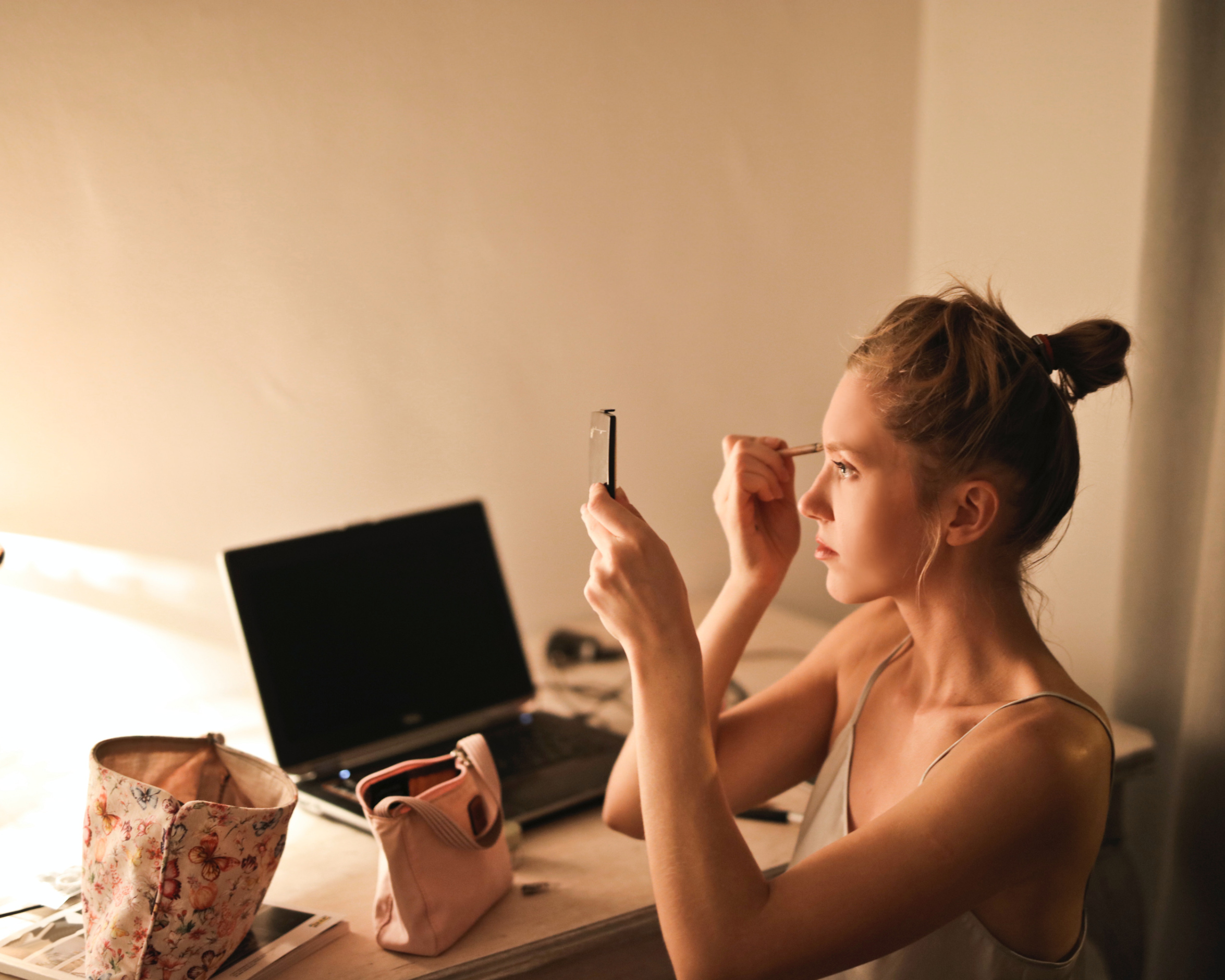We all have questions; sometimes they feel silly but we’re here to be the big sister you need. Here are the answers to your most-asked beauty questions
How do I combat dark marks, redness and hyperpigmentation?
Dark spots on the face can occur if the skin overproduces melanin, which is the pigment that gives skin its colour. It can be developed as a result of ageing, hormonal changes, such as during pregnancy or menopause, and, of course, sun exposure. Skin damage can also cause post-inflammatory hyperpigmentation, which is typically triggered by acne, bites, cuts and burns, excessive or incorrect hair- removal techniques, ingrown hairs, harsh skincare products or scarring from psoriasis
or other skin conditions.
Hyperpigmentation is not the only cause of dark spots on the face so it’s super important to speak to a doctor if you notice changes in texture, colour and size of existing moles or dark spots. In terms of solutions, there are many over-the-counter products and specialised skincare that help fade dark spots. They typically include active ingredients, kojic acid, retinoids, chemical exfoliants, vitamin C and azelaic acid, which is why speaking to a dermatologist is important. Combining actives and targeting more prominent pigmentation requires advice and careful use to avoid disappointing results or making the condition worse through incorrect use or application.
Can a facial massage roller lift or firm my skin?
Jade rollers and gua sha stones have been around for centuries. The tools are, however, merely a treat since your fingers are efficient tools, too. How you use them to apply creams and serums is what really matters – massaging strokes that stimulate lymphatic drainage and increase circulation are key to firmer, more lifted results over time. Applying products in a gentle upwards motion reduces puffiness but you must be gentle and avoid pushing and tugging at your skin, especially around the eye area.
How do I touch up my SPF without ruining my make-up?
Physical sunscreens should always be layered on top of your make-up. This essentially means that touch-ups and reapplications are made easier by using a dedicated foundation brush to gently pat the product onto your skin with minimal ‘damage’ to your make-up. If you are using a mineral SPF, a physical touch-up in a formula that suits your skincare and style of make-up is the best way to make sure your skin is properly covered and protected.
Is ‘clean’ or ‘dermatologist tested’ better for sensitive skin?
It often is but as with any skincare, different products and combinations interact with different skin types and concerns in unique ways. Sometimes what your skin needs may not fall in the category you prefer – some sensitive products may still not work well for you, while some chemically preserved or complex formulas may be gentler than ‘raw’ ingredients because of the way they’re put together and interact with your skin.The key is to treat any skincare in the same way: consult a professional when determining the best start to a regime, particularly if you have skin concerns or chronic flare-ups such as sensitivity, acne, rosacea or hyperpigmentation. Opting for testers to do a 24- or 48-hour patch test on your inner elbow is first prize even once you’ve received expert advice.
Why does my foundation look orange?
This question goes back to colour theory and primary colours – most undertones are either pink or yellow and layer on different skin tones with different results. If your foundation looks orange or peachy, it is likely the wrong undertone for your skin tone. Very yellow skin layered with a foundation with too much pink in it will look orange. If you’re more on the neutral or pink side and use a foundation that is too yellow or golden, it will appear orange too. Remember that red and yellow makes orange while pink and yellow makes peach or orange.
Why doesn’t my make-up last?
This has everything to do with your skin’s moisture levels. If your skin is dry, it will try to draw moisture from anything
it can, including make-up. For combination or oily skin, there are other considerations. Oil breaks your make-up down, which is why many eye make-up removers often contain oil and is also the reason oil cleansing became such a movement. This doesn’t mean you should skip moisturising though, especially since stripping or starving your skin of hydration tends to trigger the sebaceous glands. Opt for a lightweight gel moisturiser for a non-sticky and comfortable feel. Added to that, a mattifying primer can work wonders in creating a barrier between your skin’s oil and make-up. Prepping (serums and hydration) and priming (suited to your skin type and desired make-up finish) are the key components to lasting make-up. Also know that setting spray is your friend – both for maintaining hydration and locking your artistry in place.
Why do I have to wash my make-up off?
Your pores are stretchy, breathable little pockets that can become enlarged if you sleep with make-up on often. Your skin repairs and rebuilds while you sleep and it needs to breathe without obstruction to do this well. Your skin cell mitosis is at its peak between 11 pm and 12 am so make sure you support that by creating a clean slate. And if you’re wondering why you may be experiencing breakouts – ask yourself when last you washed your pillow case. Dead skin cells, oils and sweat built up on your pillowcase can clog pores. Make sure you’re switching pillow cases weekly.
Compiled by: Stefanie Titus-Petersen







